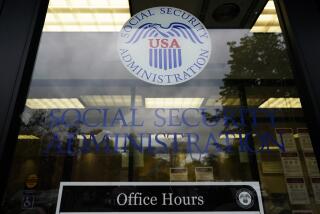When It Pays to Pay Off Your Mortgage Early
- Share via
Q: With interest rates on savings accounts so low these days, does it make any sense for me to reduce the amount of my home mortgage principal by increasing my monthly payment?
I can’t refinance my 9.5% adjustable rate $240,000 home loan and come out ahead. But I figure that since interest rates on savings accounts and other investments are so much lower than my mortgage rate, it might make sense to pay down the loan--in essence getting 9.5% on that money--rather than put the money into some other savings investment. What do your experts say? --M.T.
A: The experts agree with your analysis--but with a few caveats.
First let’s explain why anyone would even want to increase his mortgage payments. By lowering the amount of your mortgage principal, you significantly reduce the length of your loan, and save thousands and thousands of dollars.
Even adding just $25 to $50 to your mortgage payment each month can cut years--and thousands of dollars--off the full life of the loan.
According to Robert Dapper of Mortgage Surveillance Reports in Irvine, a consumer with a 30-year, 9.5% mortgage of about $200,000 could save a total of about $66,000 by simply adding $50 to each of his monthly payments, starting with the very first one.
Your individual savings will depend on your interest rate, loan amount and the number of years remaining on your loan. Your lender should be able to give you an amortization schedule that will detail how your existing loan payments are split between interest and principal and how accelerating repayment of the principal will reduce the term of your loan.
In general, financial planners say reducing your mortgage loan balance makes good financial sense, particularly in today’s environment of low interest rates on savings and other investments, because by retiring a debt that carries, say, a 9.5% interest rate you are, in effect, making an investment with that rate of return.
Further, by accelerating the retirement of your mortgage loan, you are also investing in your own home, which should be among the most safe investments you can make.
Unless real estate values are plunging so dramatically that the fair market value of your home is now close to what you still owe on it, investing in your own home is virtually a zero-risk proposition.
However, this strategy may not be right for everyone. The time to begin increasing your principal payments is early in your mortgage loan when nearly all of your monthly payment is interest on the outstanding balance.
According to one analysis, on a 30-year fixed mortgage, with 360 equal payments, you don’t hit the 50-50 mark--the point when roughly half your payments goes toward interest and the rest toward principal--until payment number 276. That’s in the 23rd year of the mortgage. If your mortgage has already been running for many years, your potential gain from reducing the loan balance is less than it would be if you started at the beginning of the loan.
Another issue that cannot be ignored is the fact that the tax deduction that mortgage interest carries is one of the few remaining deductions left to American taxpayers. By accelerating the loan repayment, you are in essence reducing the number of years that that deduction is available to you. For a middle-aged homeowner facing retirement in 15 years to 20 years, it may be a wise strategy. But for the young homeowner, who believes that he will still be in that house in 20 years, it may not make as much sense.
Some financial planners note that a 9.5% mortgage loan is, after tax deductions, the equivalent of only about 6.5% for a taxpayer in the highest bracket--in other words nothing worth fretting over.
However, other planners note that in order to earn that same 6.5% after tax, a taxpayer would have to be able to find an investment paying 9.5% today, a virtual impossibility unless the investor is willing to assume some risk. And as we already noted, investing in your own home should be as risk free as it gets these days.
A final issue to be considered is that once you make that principal payment, there is no getting that money back until you sell or refinance your house. This is a very illiquid investment, and you had better not need that money.
But there is nothing to say that a homeowner who begins accelerating the principal payment at the rate of $50 or more per month has to keep it up. If you need the money or if interest rates on savings accounts and other investments rise--as they will invariably do one of these days--you can simply stop making the extra payments. You are under no obligation to keep up what you have voluntarily started.
For more information about retiring your mortgage, readers might want to obtain “Free and Clear: Getting the Mortgage Monkey off your Back,” a pamphlet written by the late Don G. Campbell, a former real estate writer for The Times. It is available for $2 by sending a self-addressed, stamped envelope to P.O. Box 2960, Culver City, Calif. 90231-2960.
More to Read
Inside the business of entertainment
The Wide Shot brings you news, analysis and insights on everything from streaming wars to production — and what it all means for the future.
You may occasionally receive promotional content from the Los Angeles Times.










